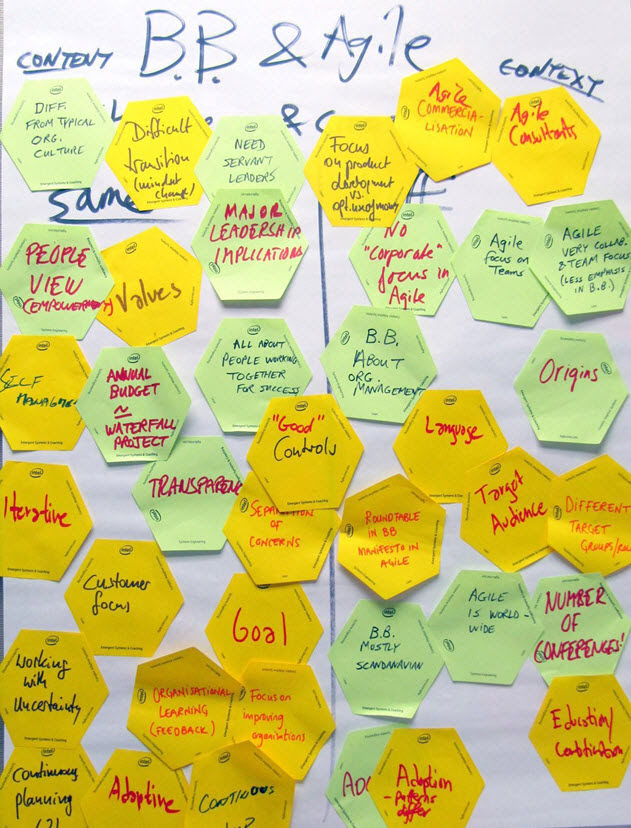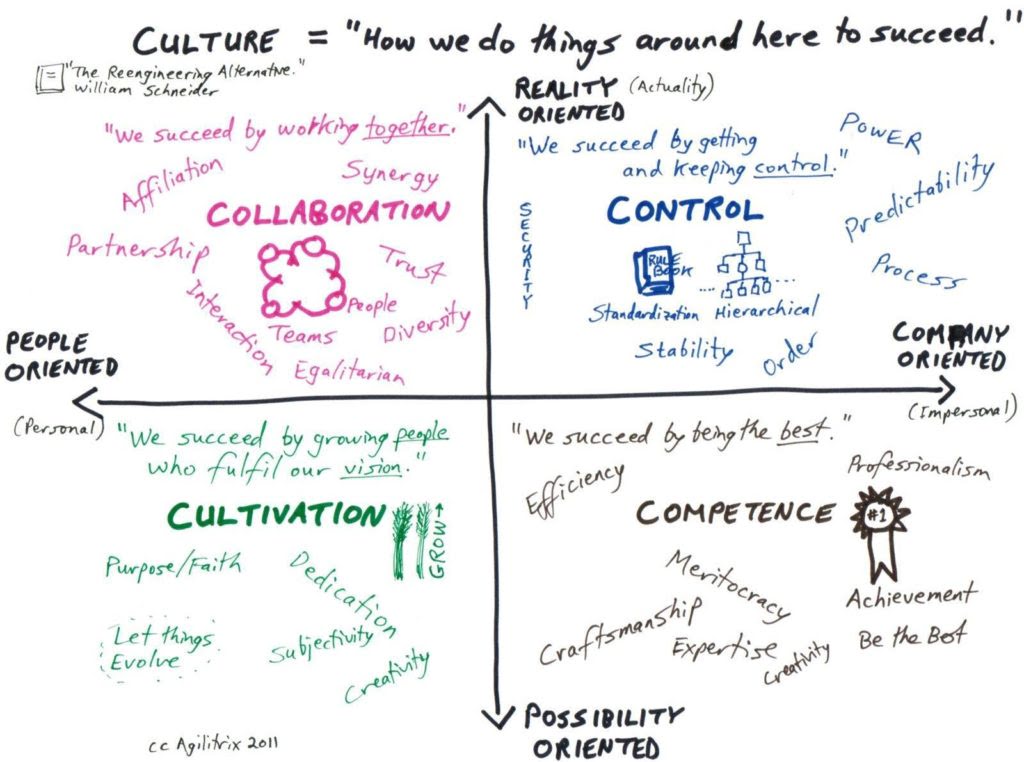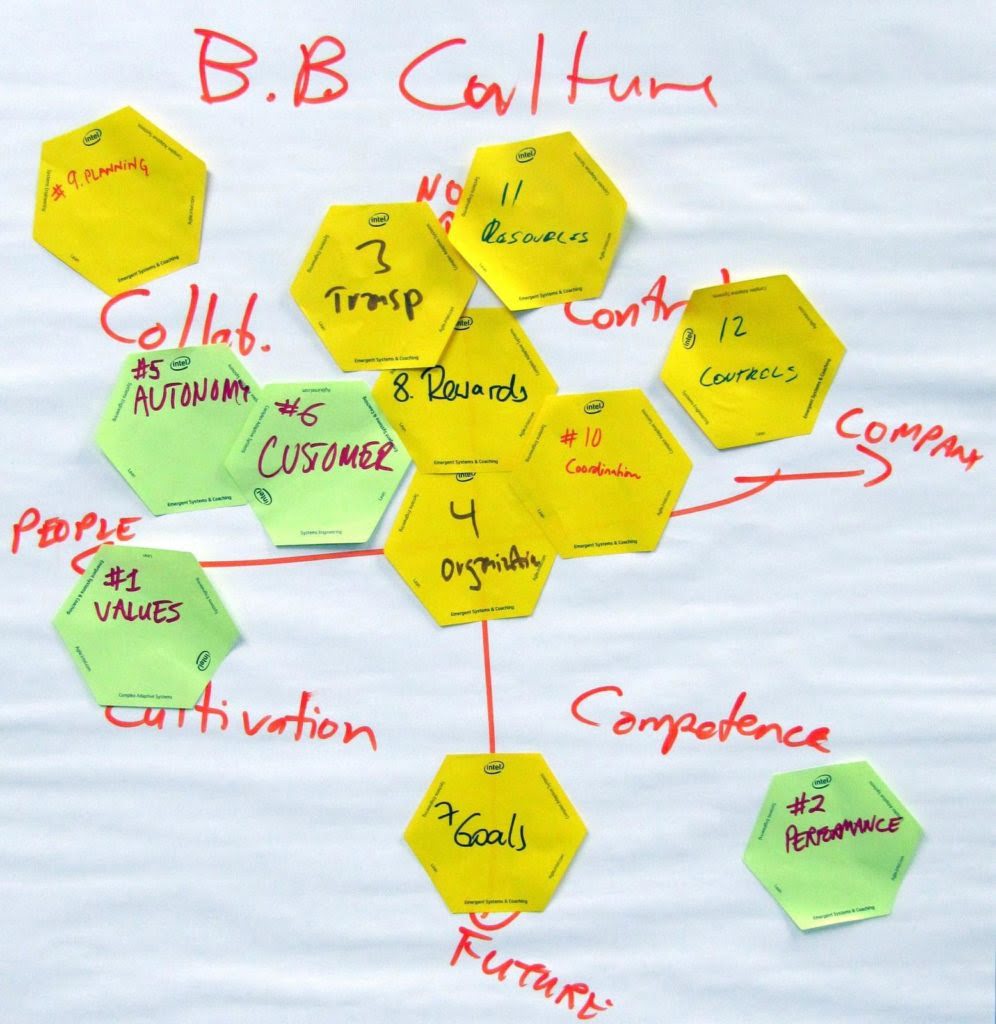by Michael Sahota, Bjarte Bogsnes, Jaana Nyfjord, Jorgen Hesselberg, Almir Drugovic
Many large and mid-sized organizations struggle with taking Agile beyond IT largely because Agile does not provide any guidance on governance structures. In this vacuum, there is the invalid assumption that traditional management practices will work just fine. Years of Agile failures have proven that traditional management practices are in conflict with Agile values and prevent the spread of Agile [VersionOne, 2011] [Sahota, 2011].
In this article, we argue that the leadership and governance principles of Beyond Budgeting are an excellent complement to Agile’s team orientation because they are aligned around values and mindset (culture). Beyond Budgeting provides the organizational guidance needed to create an environment where Agile can thrive.
Much of the current work around “Enterprise Agile” and “Scaling Agile” addresses an important problem: how can we constrain Agile to make it fit with traditional management practices? In this article, we outline a different model – How can we change traditional management practices so companies can get the full benefits of Agile?
Beyond Budgeting provides “Agile” Organizational Governance Principles
Beyond Budgeting emerged as a management model in the late 1990s, growing from practice in several European and US organizations [Hope & Fraser, 2003][Bogsnes, 2008]. It is an alternative to the traditional command and control type management models, which are usually based on budgetary and other similar control mechanisms.
The purpose of Beyond Budgeting is not necessarily to get rid of budgets, but to create more agile and human organizations that can cope not only with more dynamic and unpredictable business environments, but also with the knowledge worker’s new and different expectations with regard to leadership and management; as such, Theory X and Theory Y [McGregor 1960] have failed the test of time.
To achieve this, we need to change traditional management. At the core of traditional management we find the budgeting process and the budgeting mindset. Normally, both need to go, but there are examples of organizations with traditional budget constraints, but that are more in tune with Beyond Budgeting than companies that have technically abolished budgets altogether, yet have found other ways of micro-managing their organizations.
Coherence between values/leadership principles and management processes is important in Beyond Budgeting. It does not help with Theory Y leadership visions if we have Theory X management processes, which unfortunately, is the case in many organizations.
Beyond Budgeting is not a management recipe. It is rather a set of guiding principles that must be interpreted based on business type, history and culture. These are seldom implemented in one big bang; the change journey is typically more evolutionary than revolutionary.
Change in Leadership
Beyond Budgeting defines simple rules around leadership for creating an Agile- friendly environment. Like the Agile Manifesto, they outline what is valued and what is not.
| 1. Values – Govern through a few clear values, goals, and boundaries, not detailed rules and budgets. |
| 2. Performance – Create a high performance climate based on relative success, not on meeting fixed targets. |
| 3. Transparency – Promote open information for self-management, don’t restrict it hierarchically. |
| 4. Organization – Organize as a network of lean, accountable teams, not around centralized functions. |
| 5. Autonomy – Give teams the freedom and capability to act, don’t micro- manage them. |
| 6. Customers – Focus everyone on improving customer outcomes, not on hierarchical relationships. |
Change in Process
Beyond Budgeting clearly outlines changes in process needed to move beyond traditional management practices.
| 7. Goals – Set relative goals for continuous improvement, don’t negotiate fixed performance contracts. |
| 8. Rewards – Reward shared success based on relative performance, not on meeting fixed targets. |
| 9. Planning – Make planning a continuous and inclusive process, not a top-down annual event. |
| 10. Coordination – Coordinate interactions dynamically, not through annual planning cycles. |
| 11. Resources – Make resources available as needed, not through annual budget allocations. |
| 12. Controls – Base controls on relative indicators and trends, not on variances against plan. |
Beyond Budgeting and Agile Are Compatible and Complementary
It has been noted earlier that Agile and Beyond Budgeting share some similarities [Lohan et al., 2010]. They are oriented toward fast changing operational environments and use sense and response based control mechanisms, allowing an organization to keep pace with dynamic environments. In particular, they each have a distinctly adaptive approach to deal with the dynamics of today’s business environment.
We extend this analysis by noting that Agile and Beyond Budgeting (BB) are highly compatible since:
- They promote similar organizational values
- They focus on complementary aspects of organizations
- They promote decision-making based on empirical results, not by following a predefined plan
There are a number of dimensions where BB and Agile are very similar:
- Values (e.g. empowerment, self-management and servant leadership)
- People working together for success
- Customer focus
- Transparency
- Adaptive and working with uncertainty
- Organizational learning
- Generative set of principles
- Lots of partial adoption and not full transformation The table below shows some key differences:
| Agile | Beyond Budgeting |
| Teams | Corporate |
| IT and product development | Whole organization |
| Mainstream | Early adopters |
| Worldwide | Mostly Scandinavia |
| Lots of conferences | Fewer conferences |
| Origin in software development | Origin in finance |
The image below, from a group workshop, provides additional details and perspective. The left side shows where they are the same and the right side shows where they differ.

Beyond Budgeting and Agile Promote Compatible Organizational Culture
Although Beyond Budgeting and Agile have somewhat different focus and principles, they are compatible as culture systems.
Schneider Culture Model
The Schneider Culture Model provides a simple way to understand and reason about organization culture.
The Schneider Culture Model defines four distinct cultures:
- Collaboration culture is about working together
- Control culture is about getting and keeping control
- Competence culture is about being the best
- Cultivation culture is about learning and growing with a sense of purpose
The diagram below summarizes the Schneider Culture Model. Each of the four cultures are depicted – one in each quadrant. Each has a name, a “descriptive quote”, a picture, and some words that characterize that quadrant.

Agile Culture is About People
As identified in “An Agile Adoption and Transformation Survival Guide” (Sahota, 2012), Agile defines a culture system that is focused on people. It is primarily about a culture of Collaboration and Cultivation (Learning).
Beyond Budgeting Culture is About Balance
When we apply the Schneider model to the 12 principles of Beyond Budgeting, we see a pattern emerge in the image below:
 We can see that Beyond Budgeting spans all four culture areas. This can be seen as promoting balance or creative tension between the different aspects of culture.
We can see that Beyond Budgeting spans all four culture areas. This can be seen as promoting balance or creative tension between the different aspects of culture.
If we count the number of principles in each quadrant, then we might infer that the primary culture of BB is around Collaboration, with a secondary culture of Control. But this assumes that all principles are equal, and perhaps misses the essence of BB culture.
If we consider the principles in sequence of importance and take the top three from each set of leadership (1, 2, 3) and process principles (6, 7, 8), we get a different perspective. Here, we see the focus is balanced around Collaboration, Cultivation, and Competence.
Importance of Un-Control
But what about the elements of BB that fall within control culture? Upon further inspection, these are about healthy forms of control and not about traditional control at all.
10. Coordination – Coordinate interactions dynamically – is similar to the principle of self-organizing teams and is about avoiding top-down control.
11. Resources – Make resources available as needed – is about responding to change vs. following a plan.
12. Controls – Base controls on relative indicators and trends – is about emergence rather than distortion of the system through targets. In this way, it could be re-interpreted as indicative of a cultivation culture.
Concluding Thoughts on Culture
Agile and Beyond Budgeting are very similar culture systems. Agile has a stronger emphasis on People (Collaboration, Cultivation) while Beyond Budgeting has a stronger focus on Competence.
Conclusion: Why Beyond Budgeting is an Excellent Governance System for the Agile Enterprise
Agile is a proven team-based culture system; however, it lacks a balanced organizational perspective. Beyond Budgeting principles provide a coherent, proven approach to bring Agile principles to the enterprise.
Agile and Beyond Budgeting are highly compatible because they promote similar organizational values and they focus on complementary aspects of organizations. Hence, the Beyond Budgeting model, coming from a different discipline, suggests a useful governance system for the Agile enterprise.
Acknowledgements
This work took place in December 2013 at the Supporting Agile Adoption Workshop sponsored by the Agile Alliance.
References
Bogsnes, Bjarte (2008). “Implementing Beyond Budgeting: Unlocking the Performance Potential”
Hope, Jeremy and Fraser, Robin (2003). “Beyond Budgeting: How Managers Can Break Free from the Annual Performance Trap”
Bunce, Hope & Röösli (2011). “The Leader’s Dilemma”
Lohan, Gary; Conboy, Kieran & Lang, Michael (2010). “Beyond Budgeting: A Performance Management Model for Software Development Teams”
McGregor, Douglas (1960). “The Human Side of Enterprise”
Sahota, Michael (2012). “An Agile Adoption and Transformation Survival Guide: Working with Organizational Culture”, InfoQ, http://www.infoq.com/minibooks/agile-adoption-transformation
VersionOne, State of Agile Development Survey Results. Retrieved March 9 2012. http://www.versionone.com/state_of_agile_development_survey/11/










